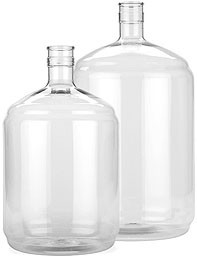 Hi, I was told by a local winemaker, that if you add vanilla bean to a racking of chardonnay, it gives it a subtle nice flavor. Well, we put just half a vanilla bean in and racked it for a month. We just racked again and took the vanilla bean out. The wine has a weird plastic-like taste and smell to it that is rather unpleasant. We are so disappointed because we were so looking forward to this batch of chardonnay! Is this smell and taste because of the vanilla bean? Did we leave it in too long? And, how do we salvage this batch of chardonnay? Help!
Hi, I was told by a local winemaker, that if you add vanilla bean to a racking of chardonnay, it gives it a subtle nice flavor. Well, we put just half a vanilla bean in and racked it for a month. We just racked again and took the vanilla bean out. The wine has a weird plastic-like taste and smell to it that is rather unpleasant. We are so disappointed because we were so looking forward to this batch of chardonnay! Is this smell and taste because of the vanilla bean? Did we leave it in too long? And, how do we salvage this batch of chardonnay? Help!
Name: Mary A.
State: MA
Hello Mary,
Adding vanilla bean to a wine recipe is one of those tricks that many home winemakers try out from time to time. I have not used vanilla beans, myself, but I have tasted wines with their addition and observed no negative effects — certainly, nothing like you are describing. I’ve also had lots of other winemakers describe to me their use with varying degrees of success, but I’ve never had someone come to me with a bad experience from its use. So, I think it is highly unlikely that the vanilla bean is the root of your problems.
By far the most common reason for having a plastic taste or smell in your wine is using fermenters that are not made of a food-grade plastic. It is very important to verify that any plastic vessel that comes in long-term contact with the wine be food-grade. Plastics that are deemed food-grade are made from a plastic that is more pure, with no dyes or other additional chemicals that can leach out into the wine. They are also mostly made from non-recycled plastic.
Any container you that get from a food supplier or that is being sold for the purpose of holding consumables, should work just fine. Stay away from containers that you find at the hardware store and other such places. The only exception to this is if the container is being sold specifically for food use or actually says “food-grade” on it.
One common misconception is that you can tell if a plastic container is food-grade by the recycling symbol that is stamped onto the container. The recycling symbol is the arrowed triangle that’s seen on plastic containers. It will have a number in the center of the triangle ranging from 1 through 7. These numbers denote the type or class of plastic from which the container is made. These symbols are used so like-plastics can be easily sorted together for recycling.
But one thing these symbols do not do is tell you if the plastic is food-grade or not. While only certain types of plastics are capable of being food-grade for liquids (numbers 1, 2, 4 and 5), not all containers made from those plastics are food-grade. What makes them food-grade is how pure of plastic is being used. Is it made mostly from recycled plastic or not? Does it have dyes and other chemicals that can release from the plastic.
Mary, hopefully this is not what’s going on with your wine, but based on your description, that’s what it sounds like. I know of no effective way to reverse these types of defects. You may get some marginal benefit from fining the wine with gelatin. You may also notice a reduction of the odor with the addition of a sulfite such as Campden tablets or potassium metabisulfite. Time may also reduce these effects. But beyond this there is not much else you can do.
Best Wishes,
Ed Kraus
———————————————————————————————————
Ed Kraus is a 3rd generation home brewer/winemaker and has been an owner of E. C. Kraus since 1999. He has been helping individuals make better wine and beer for over 25 years.
